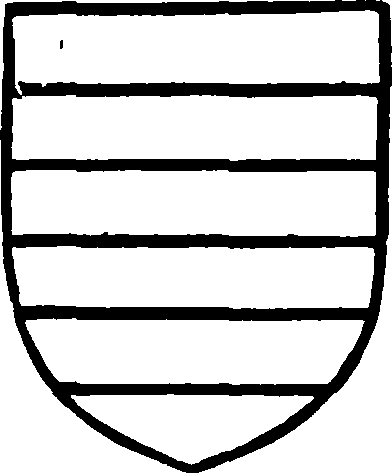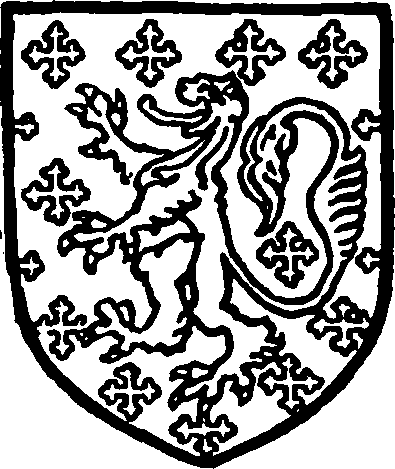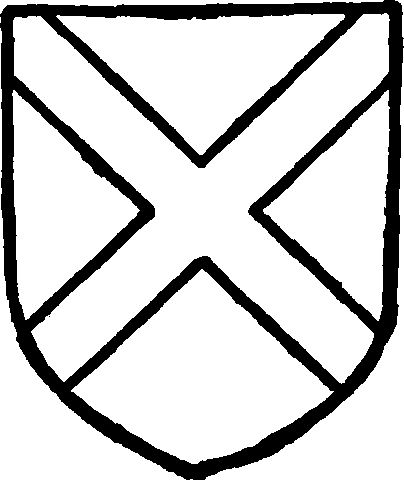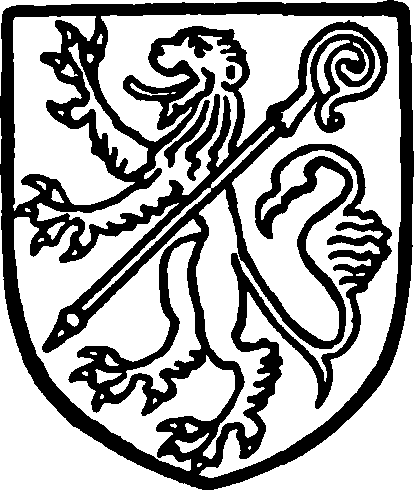A History of the County of York North Riding: Volume 1. Originally published by Victoria County History, London, 1914.
This free content was digitised by double rekeying. All rights reserved.
'Parishes: Cundall with Leckby', in A History of the County of York North Riding: Volume 1, ed. William Page (London, 1914), British History Online https://prod.british-history.ac.uk/vch/yorks/north/vol1/pp363-367 [accessed 19 April 2025].
'Parishes: Cundall with Leckby', in A History of the County of York North Riding: Volume 1. Edited by William Page (London, 1914), British History Online, accessed April 19, 2025, https://prod.british-history.ac.uk/vch/yorks/north/vol1/pp363-367.
"Parishes: Cundall with Leckby". A History of the County of York North Riding: Volume 1. Ed. William Page (London, 1914), British History Online. Web. 19 April 2025. https://prod.british-history.ac.uk/vch/yorks/north/vol1/pp363-367.
In this section
CUNDALL-WITH-LECKBY
This parish (Condel, xi cent.; Cundale, xiii cent.; Coundale, xvi cent.), with its township of Nortonle-Clay, lies in the south-east corner of the wapentake of Hallikeld, where the River Swale cuts it off from Birdforth Wapentake. The township of Fawdington, which also belongs to the ecclesiastical parish of Cundall, lies across the river, and is included in Birdforth.
The parish covers about 3,700 acres, of which 1,576 are pasture land (fn. 1) and 1,699½ acres are in cultivation.
The subsoil is for the most part alluvium, though there is some Keuper Marl. The chief crops are turnips, barley and wheat.
There are a few small woods, Fogfield Wood, The Carr and the Rookery, but these amount altogether to only 104 acres of woodland. There is no very considerable elevation in the parish. The highest points are Old Wives' Hill, just outside the village, and Fir Tree Hill farther north, each of which is 125 ft. above ordnance datum. In 1341 Alexander de Leeds granted to Marmaduke Darell half an acre of his demesne in a place called Staynhill on which to build a windmill. (fn. 2) This must be the Windmill Hill north-west of Old Wives' Hill. The windmill, however, is not mentioned in any records of the place. A water-mill in Cundall appears in the 16th and 17th centuries as an appurtenance of the manor. (fn. 3)
The village lies near the banks of the Swale. It consists of a group of houses built where three roads meet. The village street runs north-east from this point to the Poor Houses, from which a lane runs north-west to the church of St. Mary and All Saints. This is a modern building erected in 1852 on the site of the old church at a little distance from the rest of the village. West of it stands the vicarage, with which it is connected by the path running round Old Wives' Hill.
One of the three roads which meet at Cundall runs north-west past the church and the few scattered farms of Leckby to the village of Asenby, another leads south-east to Thornton Bridge, and, crossing the River Swale by the bridge from which the village takes its name, turns north to Fawdington.
Here the Abbot of Byland had a grange. In 1235 Robert Deyvill granted him licence to establish a fishery in the river between the mill of Fawdington and the 'water called Lowysbek,' (fn. 4) which must mean the tiny stream flowing into the Swale to the north of Fawdington; he also received licence to establish a fish pool opposite 'Cambesheved.'
The third road runs in a south-westerly direction, crossing Cundall Beck, a tributary of the Swale, at Bat Bridge, and finally becoming the village street of Norton-le-Clay. In the 16th century the inhabitants of Norton were prevented from attending the parish church by 'the greate abundance of waters oft tymes in the year.' (fn. 5) At the present day there is a chapel of ease dedicated in honour of St. John dating from 1840. A Wesleyan chapel was built in 1863 at the entrance to the village.
An inclosure award for the township of Norton-leClay was made in 1791. (fn. 6)
Manors
CUNDALL at the time of the Domesday Survey was among the lands of Robert Count of Mortain. (fn. 7) With its berewicks of Norton and Leckby it formed an important 'manor' of 21 carucates, which had been held by Wallef. In 1086 Alured was tenant, and the land was described as waste. Land in Leckby and Brampton Hall (Branstone), Fawdington (Goindel), North Stainley (Staneleia), East Tanfield (Danefelt), and 'Caldwelle' in Marton-on-the-Moor, (fn. 8) was soke of the manor.
Cundall, with other lands of the Count of Mortain, (fn. 9) was granted to Niel de Albini, and the overlordship followed the descent of his manor of Thirsk (fn. 10) (q.v.).
From an early period Cundall was closely associated (fn. 11) with Thornton Bridge. (fn. 12) The family of Deyvill were tenants in demesne, and were followed by the Nevills of Thornton Bridge. Cundall was held by this family till 1522, when Ralph Nevill of Thornton Bridge died, leaving three daughters and co-heirs—Katherine wife of Walter Strickland, Joan wife of John Constable, and Clara, who afterwards married Thomas Nevill of Holt in Leicestershire. (fn. 13) The three parts of this manor were held separately for two generations, (fn. 14) but all appear to have come finally into the possession of the Constables. (fn. 15) The manor was settled on John Constable and his wife Katherine and their heirs (fn. 16) in 1561. Henry son of John (fn. 17) sold it in 1597 to Robert Walter or Walters, (fn. 18) whose family continued to hold it for some generations. Robert seems to have been succeeded by William Walters, (fn. 19) who with his son and heir Christopher (fn. 20) was party to a fine concerning the manor in 1619. (fn. 21) Robert Walters son of Christopher (fn. 22) succeeded him, and was in possession in 1647. (fn. 23) He had two sons, Robert and Christopher, of whom Robert was the elder. (fn. 24) Robert was in possession in 1674 (fn. 25) and died in 1694. (fn. 26) He had sons William and Richard (fn. 27) and a daughter Anne, who was his ultimate heir. (fn. 28) In 1712, however, the manor was quitclaimed by Richard Walters to his uncle Christopher, (fn. 29) who had taken by royal licence the name of Stockdale. (fn. 30) Thomas Stockdale was in possession in 1717, (fn. 31) but the manor soon afterwards passed from this family to the Cholmleys. Hugh Cholmley held it in 1743, (fn. 32) and in 1750 it was in the hands of Nathaniel Cholmley, (fn. 33) whose heirs continued to present to the living during the early part of the 19th century. (fn. 34) In 1820, however, a family called Prest was in possession of the manor, (fn. 35) and not long afterwards it appears to have passed into the hands of William Heathcote, (fn. 36) who still held it in 1879. On the death of William Heathcote without heirs in 1884 (fn. 36a) it passed to the Crown. From the Crown it was purchased in 1889 by Sir Christopher afterwards Lord Furness, who transferred it to his son Mr. Marmaduke Furness in 1904. (fn. 37) The latter has now succeeded as Lord Furness.

Constable. Barry or and azure.
Among the liberties of the manor was a free fishery in the waters of the Swale, a privilege which dates from the 13th century, when Robert Deyvill quitclaimed the right of fishing 'half the water of the Swayle' to the Abbot of Byland. (fn. 38) It is mentioned among the appurtenances of the manor in the 16th and in the 19th century. (fn. 39)
The Prior of Newburgh held land in Cundall. (fn. 40)
LECKBY (Letteby, xiv cent.; Lexby, xvii cent.) was associated closely with Cundall in the Domesday Survey, (fn. 41) and had the same overlords throughout its history. It was also held with Cundall by the Deyvills from the 13th century. (fn. 42) In 1320 John Deyvill granted to his daughter Margaret the vill of Leckby, with remainder to Alexander de Leeds, Elizabeth his wife (fn. 43) and Alexander's heirs. He granted the park belonging to the manor to Alexander and Elizabeth, who two years later refeoffed him of it. (fn. 44) This park is not again mentioned.
Margaret Deyvill had three daughters—Edelina, Eleanor and Agnes. Their respective husbands were Thomas del Schires, Richard de Exelby and John de Sharow. (fn. 45) In 1354 Thomas del Schires and Edelina confirmed their lands and tenements in Leckby to Ralph de Nevill. (fn. 46) The other co-heirs disputed the possession of this third part with Alexander de Nevill son of Ralph in 1392, (fn. 47) and he was ordered to restore it. The 'vill and lordship' of Leckby was settled on John Sharow and his heirs in 1416–17, (fn. 48) but issue in this family must ultimately have failed, for in 1424 Alexander Nevill was in possession. (fn. 49)
Leckby then followed the descent of Cundall (q.v.) till 1522, when it was inherited by the three daughters of Ralph Nevill. (fn. 50) The shares were held separately for a considerable time. In 1579 John Constable held 'the manor of Leckby,' (fn. 51) and the appearance of Christopher Stockdale in an agreement concerning a third part of it in 1699 (fn. 52) suggests that this part followed the descent of Cundall. The Stricklands held their third part as late as 1649. (fn. 53)

Long, baronet. Sable powdered with crosslets and a lion argent.
The share of the youngest daughter Clara passed first to her son Francis Nevill, (fn. 54) and then to his sister Mary, who married Thomas Smith of Cressing, co. Essex. (fn. 55) William, one of the sons of Mary and Thomas Smith, died seised of this share in 1631, his heir being his brother Thomas, who had several sons, and was then a man of seventy. (fn. 56) This family, which assumed the name of Nevill, (fn. 57) remained in possession till 1672, when Sir Thomas Nevill sold the estate, with Kirkby Hill (q.v.) and other manors, to Sir Robert Long, bart., (fn. 58) whose family held it at least till 1775. (fn. 59)
The present lord of the manor is Mr. Basil Hollond Woodd.
Like Cundall, NORTON-LE-CLAY (Nortune in Luto, xiv cent.; Norton in the Dyrt, xv cent.; Norton in the Clay, xvi cent.) was in 1086 among the possessions of the Count of Mortain. (fn. 60) At a very early date (fn. 61) it was given to the abbey of St. Alban, which in 1369 was said to have held it from time immemorial. (fn. 62) In 1369 a dispute arose on an attempt of the agents of the Duke of Lancaster to exact suit of court for this manor at the 'Frendles wapentake,' (fn. 63) but the right of the abbot to hold the manor free of all services was fully established. (fn. 64)

St. Alban's Abbey. Azure a saltire or.
During the 13th and 14th centuries the abbot had a subtenant in Norton-le-Clay. John de Cleasby was returned as lord in 1316. (fn. 65) In 1355 Hugh de Sadelyngstones, Hugh de Tesdale and John Lyberd granted their right in two-thirds of the manor to the abbey with the reversion of the remaining part, which was held at the time by John de Clotherum and Tesancia his wife as her dower. (fn. 66) Subsequently John de Clotherum appears to have given up his right also. (fn. 67) The tenants held the manor by fealty, rent and the service of receiving the said Abbot and the Prior of Tynemouth and his successors, monks and attendants in coming and returning from the abbey of St. Alban to the priory of Tynemouth, or from the priory to the abbey, and of finding them food and drink and other necessaries at the manor of Norton. (fn. 68)
After the Dissolution the manor remained for some time in the Crown. In 1599 Elizabeth granted it to Henry Best and Robert Holland. (fn. 69) They must have alienated it soon afterwards to William Robinson of Newby, who died seised of Norton-le-Clay in 1616. (fn. 70) The manor followed the descent of Newby (q.v.) till the middle of the 19th century. Soon after 1859 it came by purchase into the possession of the Rawson family of Nidd Hall, Ripley. (fn. 71) At the death of Miss Rawson, who was lady of the manor till 1891, the estate passed to her niece, wife of Viscount Mountgarret. (fn. 72) The present viscount is lord of the manor.
At FAWDINGTON (Faldington, xiv–xv cent.; Fawdington, xvi cent.), which appears never to have been a manor, Roger de Mowbray, the founder of Byland Abbey, gave 2 carucates of land to the abbot. (fn. 73) More was added by William de Maundeville and Henry de la Rivere. (fn. 74) In 1286 and subsequently the abbot was holding the whole vill of the Mowbray family. (fn. 75) He had the privilege in this grange and that of Balschagh of exemption from finding meat for man and horse (putura) for the forester. (fn. 76)

Byland Abbey. Gules a lion argent with a crozier or bend sinisterwise athwart him.
After the Dissolution the estate was granted to William Romesdon and Edward Hoppey. (fn. 77) In 1545 the grantees had licence to alienate the messuage and lands in Fawdington to Sir Nicholas Fairfax. (fn. 78) He was succeeded by his son Sir William Fairfax, (fn. 79) who in 1587 conveyed three messuages and lands in Fawdington and Brafferton to Edward Bell, Henry Bell and John Kaye. (fn. 80)
Edward Bell of Fawdington died in 1597 and was succeeded by his son Guy. (fn. 81) The family was associated with Fawdington as late as 1732, (fn. 82) but the later history of the estate has not been traced. It is now owned by Mr. John Durham and Sir Edward Coates, bart., M.P.
Churches
The church of ST. MARY AND ALL SAINTS consists of chancel measuring internally 21 ft. 6 in. by 14 ft., nave 41 ft. 6 in. by 20 ft., a south porch and a small west tower. The building dates from 1852, when it was re-erected in place of what Whitaker in 1823 describes as a mean and diminutive building with a single aisle and a modern brick tower. (fn. 83)
The present building is of stone, and the design is based on the style of the 14th century. The chancel has a three-light east window, two to the south and one to the north, all of two lights with traceried heads. The nave has three north and two south windows of two lights with traceried heads. The doorway is in the south wall. The tower is of three stages and has an embattled parapet. All the furniture is modern. The oldest gravestone in the church is one to Mary Molton dated 1695.
In the churchyard stands the shaft of an early Saxon cross carved on all four sides with knotwork and interlacing patterns; a corner has been rebated where it formerly served as a door lintel.
Of the three bells in the tower two are by C. & G. Mears, 1854. The tenor is an old bell; the only letters around the band are I S (or S I) repeated four times and below them is a shield with a staff forked at the bottom (like an inverted Y) and trefoiled at the top between a crowned R on the dexter and a crown and banner and apparently a bell on the sinister; a ring surrounds the staff at the junction of the fork.
The plate consists of a silver cup with cover and paten and a pewter flagon and two patens. The cup, of 1636, also bears the initials W. P. and C. R. and date 1663, as well as the maker's mark T. H. for Thomas Harrington of York. The silver paten is modern. The pewter flagon and one paten are dated 1707; the second paten bears no date.
The registers begin in 1582.
The chapel of ease of ST. JOHN, Norton-le-Clay, built in 1840, as of brick, and consists of chancel, nave, vestry, west porch and belfry with one bell.
Advowson
The church of Cundall was among the gifts made by Roger de Mowbray to the Priory of Newburgh at its foundation. (fn. 84) The grant was confirmed in 1389 (fn. 85) and 1478. (fn. 86) At some time the church must have been appropriated to the priory, but no vicarage was ordained; the living is a perpetual curacy now styled a vicarage.
After the Dissolution the rectory and advowson first appear among the possessions of Sir John Constable, (fn. 87) lord of the manor in 1561. They were sold to the family of Walters shortly after the sale of the manor, (fn. 88) and remained in their hands till the end of the 17th century. Robert Walters, who died in 1694, is described as the 'impropriator of the Rectory of Cundall.' (fn. 89) The rectory appears to have followed the descent of the manor (fn. 90) till about 1844, when the Archbishop of York was patron. The Bishop of Ripon was patron in 1847 and 1849. (fn. 91) The living was still in his gift in 1879, but before 1889 the advowson had passed to the Crown. It was purchased in that year by Christopher first Lord Furness, and is now in the possession of his son and heir.
In 1536 there was a chapel at Norton-le-Clay rendered necessary by the distance of the village from the parish church and the difficulties of the road. (fn. 92) A chantry dedicated to St. Alban had been established there by the inhabitants 'for their ease.' (fn. 93)
Charities
There were in the possession of the parish certain lands in the open fields at Minship in Aldborough, which under an inclosure award of 1835 were exchanged for 6 a. 1 r., and appropriated to the use of the poor, subject to the annual payment of £2 10s. for educational purposes, created by the Rev. — Linton.
Roger Leadley, by will 1682, charged land at Norton-le-Clay, worth £3 a year, of which £1 was to be appropriated in shoes and clothes for the poor children of the township of Cundall and £2 for the poor children of Norton-le-Clay. The annuity is received from Mr. R. C. Vyner of Newby Hall, Ripon.
An annual payment of 5s. a year, charged on lands at Dishforth in respect of Mary Moulton's charity, is received from Mr. Walker of Maunby Hall, Thirsk, and given to poor widows.
Mrs. Clare Smithson, who died in 1805, by her will left £20 a year for providing bread every Sunday for the poor attending service in the church and 5s. each on Christmas Day and an allowance for coals. By a decree of the Court of Chancery in 1812 a sum of stock, now £657 16s. 7d. consols with the official trustees, was appropriated in satisfaction of the annuity. The several charters are administered by the same body of trustees in accordance with the respective trusts. The Minship lands above referred to are let at £17 18s. a year, out of which £2 10s. a year was determined by an order of the Charity Commissioners of 5 August 1904 to be an educational endowment, and is paid to the managers of the National school, founded by deed in 1872.
In 1905 £5 4s. was distributed in bread in church, coal to the value of £8 14s. was distributed, and £2 2s. in money to twelve persons.